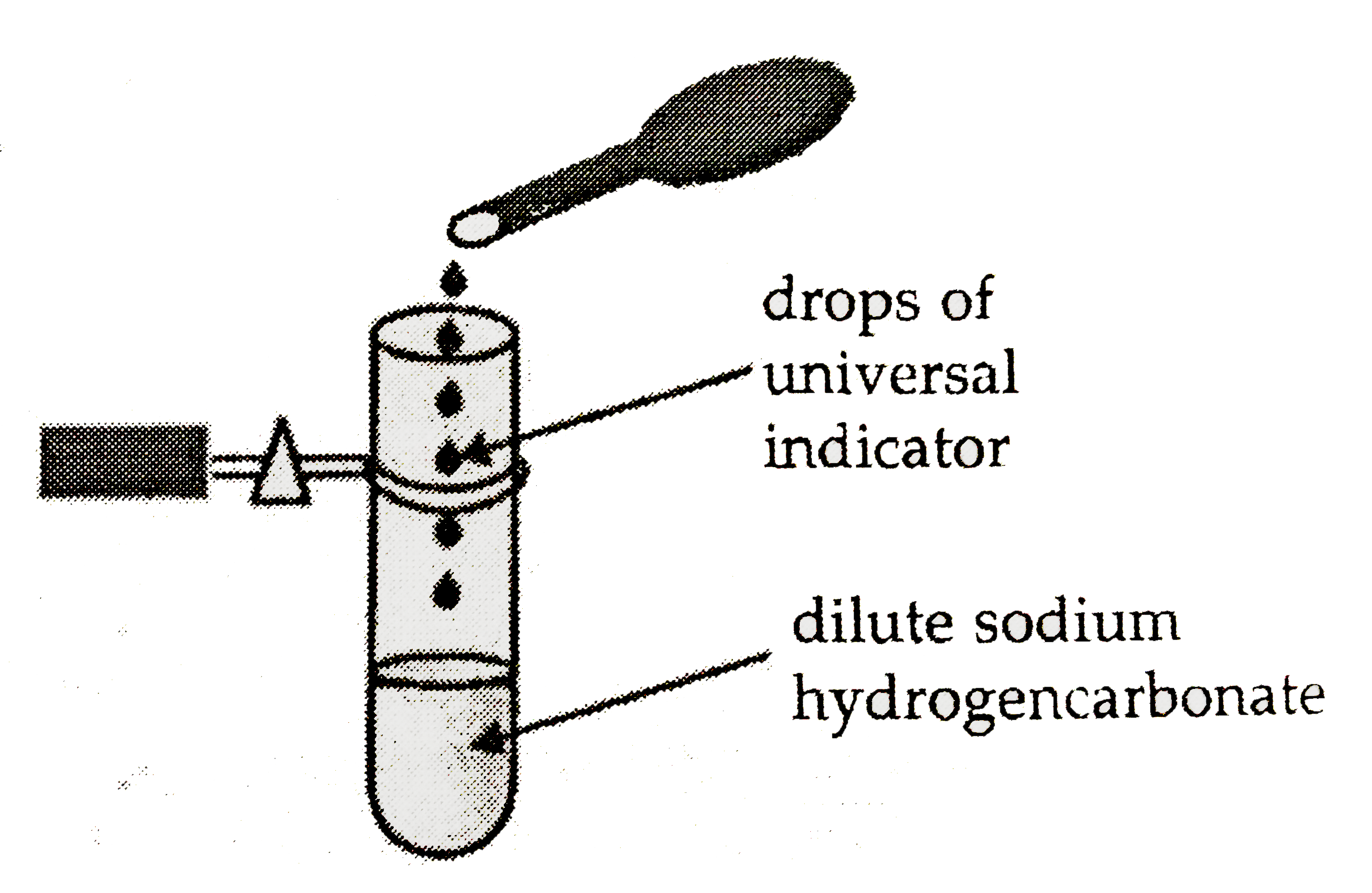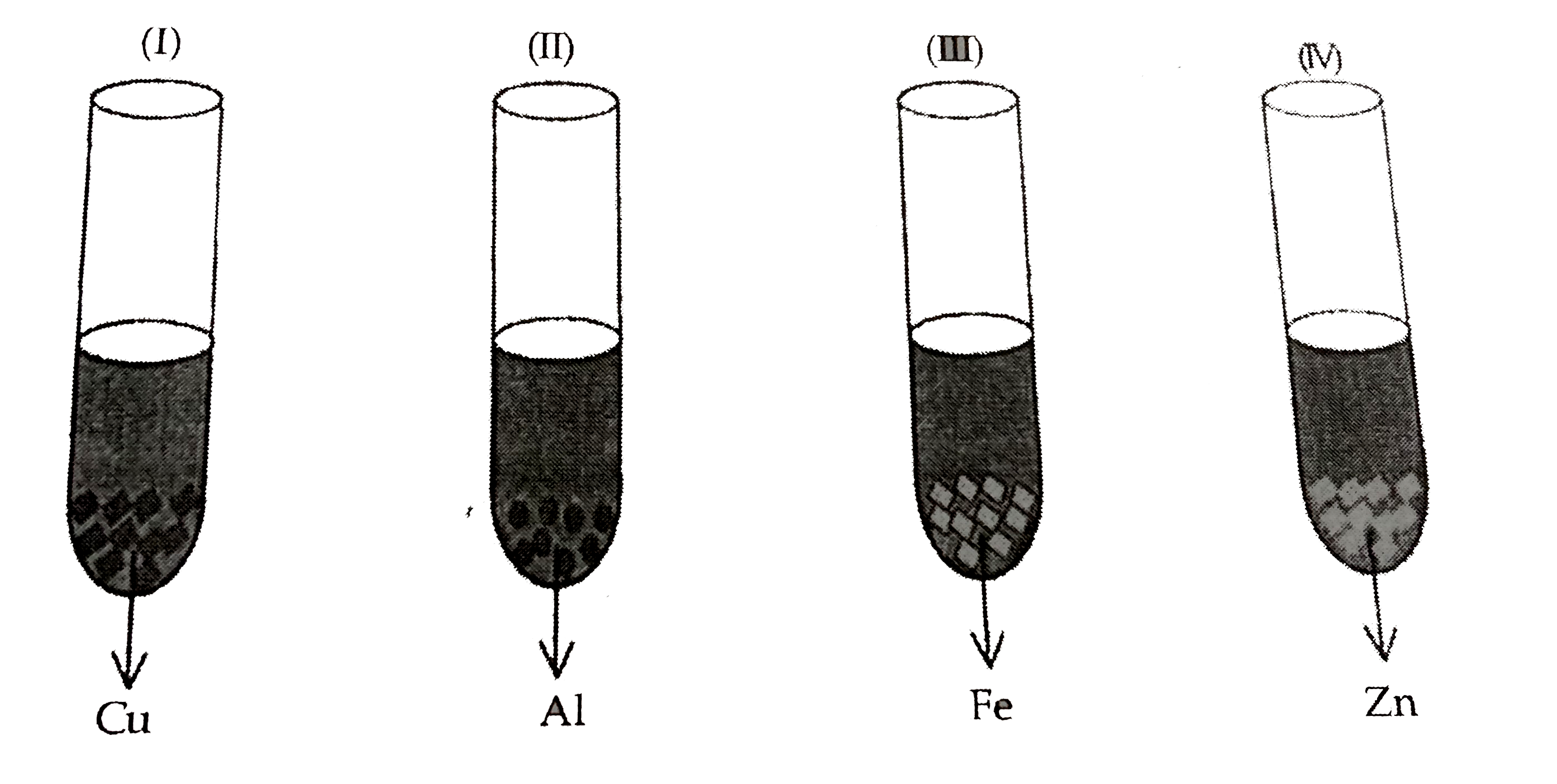A students takes 4 mL of distilled water in each of four test tubes I, II, III and IV, and then dissolves an equal amounts of four differents salts namely NaC1 in I , CaC12 in II , MgC12 in III and KC1 in IV. He then adds 8 drops of the given soap solution to each teat tube and shakes the contents of the test tube 10 times. In which test tubes will enough lather (foam) be formed?
To determine in which test tubes enough lather (foam) will be formed after adding soap solution, we need to analyze the salts dissolved in each test tube and their interaction with soap.
1. Identify the Salts in Each Test Tube:
- Test Tube I: NaCl (Sodium Chloride)
- Test Tube II: CaCl₂ (Calcium Chloride)
- Test Tube III: MgCl₂ (Magnesium Chloride)
- Test Tube IV: KCl (Potassium Chloride)
2. Understand the Nature of Soap:
- Soap is typically a sodium or potassium salt of a long-chain fatty acid. It works effectively in soft water (water that does not contain high levels of calcium or magnesium ions).
3. Determine Water Hardness:
- Calcium (Ca²⁺) and Magnesium (Mg²⁺) ions contribute to water hardness. When soap is added to hard water, it reacts with these ions to form insoluble precipitates known as scum, which prevents lather formation.
4. Analyze Each Test Tube:
- Test Tube I (NaCl): Sodium ions do not cause water hardness. Therefore, soap will react favorably, and lather will be formed.
- Test Tube II (CaCl₂): Calcium ions cause water hardness. Soap will react with these ions to form scum, preventing lather formation.
- Test Tube III (MgCl₂): Magnesium ions also cause water hardness. Similar to CaCl₂, soap will react with these ions to form scum, preventing lather formation.
- Test Tube IV (KCl): Potassium ions do not cause water hardness. Therefore, soap will react favorably, and lather will be formed.
5. Conclusion:
- Foam will be formed in Test Tubes I (NaCl) and IV (KCl) because these salts do not contribute to water hardness. In contrast, Test Tubes II (CaCl₂) and III (MgCl₂) will not produce foam due to the presence of calcium and magnesium ions.
Final Answer:
Foam will be formed in Test Tubes I and IV.
- Test Tube I: NaCl (Sodium Chloride)
- Test Tube II: CaCl₂ (Calcium Chloride)
- Test Tube III: MgCl₂ (Magnesium Chloride)
- Test Tube IV: KCl (Potassium Chloride)
- Soap is typically a sodium or potassium salt of a long-chain fatty acid. It works effectively in soft water (water that does not contain high levels of calcium or magnesium ions).
- Calcium (Ca²⁺) and Magnesium (Mg²⁺) ions contribute to water hardness. When soap is added to hard water, it reacts with these ions to form insoluble precipitates known as scum, which prevents lather formation.
- Test Tube I (NaCl): Sodium ions do not cause water hardness. Therefore, soap will react favorably, and lather will be formed.
- Test Tube II (CaCl₂): Calcium ions cause water hardness. Soap will react with these ions to form scum, preventing lather formation.
- Test Tube III (MgCl₂): Magnesium ions also cause water hardness. Similar to CaCl₂, soap will react with these ions to form scum, preventing lather formation.
- Test Tube IV (KCl): Potassium ions do not cause water hardness. Therefore, soap will react favorably, and lather will be formed.
- Foam will be formed in Test Tubes I (NaCl) and IV (KCl) because these salts do not contribute to water hardness. In contrast, Test Tubes II (CaCl₂) and III (MgCl₂) will not produce foam due to the presence of calcium and magnesium ions.
Foam will be formed in Test Tubes I and IV.
Topper's Solved these Questions
- MODEL QUESTION PAPER -2BOOK - VK GLOBAL PUBLICATIONCHAPTER - MODEL QUESTION PAPER -2EXERCISE - SECTION - B
2 Videos
- MODEL QUESTION PAPER - 4 BOOK - VK GLOBAL PUBLICATIONCHAPTER - MODEL QUESTION PAPER - 4 EXERCISE - SECTION - B
2 Videos
- MODEL QUESTION PAPER-3BOOK - VK GLOBAL PUBLICATIONCHAPTER - MODEL QUESTION PAPER-3EXERCISE - SECTION-B
2 Videos
Similar Questions
In three test tubes A, B and C, three different liquids namely, distilled water, underground
water and distilled water in which a pinch of calcium sulphate is dissolved, respectivley
are taken, Equal amount of soap solution is added to each test tube and the contents are
shaken. In which test tube will the length of the foam (lather) be longest? Justigy your
answer.
View SolutionKanchi takes 5 mL of distilled water in four test tubes A, B, C and D. She dissolves sodium chloride in test tube A, potassium chloride in test tube B, calcium chloride in test tube C and magnesium chloride in test tube D. In which test tubes will soap give lather?
View Solution
Knowledge Check
A student takes about 5 mL distilled water in four test tubes marked P, Q, R and S. He dissolves sodium chloride in P, potassium chloride in Q, calcium chloride in R and magnesium chloride in S. After that he adds equal amount of soap solution in each test tube. On shaking the solution of each test tubes he would observe a good amount of lather in the test tubes marked
AP and QBQ and RCR and SDP and SA student adds a few drops of the universal indicator solution to a dilute solution of sodium hydroencarbnonate taken in a test tube. Which of the following colour would he observe?
 AblueBgreenCmustardDyellow
AblueBgreenCmustardDyellowA student takes about 2 mL ethanoic acid in a dry test tube and adds a pinch of sodium carbonate to it. What will he observe ?
AA colourless and odourless gas evolves which burns with pop sound.BA colourless and odourless gas evolves with a brisk effervescence.CA brown coloured gas with foul smell evolves with a brisk effervescence.DA brown coloured gas with foul smell evolves which burns with pop sound.
Kanchi takes 5 mL of distilled water in four test tubes A, B, C and D. She dissolves sodium chloride in test tube A, potassium chloride in test tube B, calcium chloride in test tube C and magnesium chloride in test tube D. In which test tubes will soap give lather?
View SolutionA student takes about 2 mL ethanoic acid in a dry test tube and adds a pinch of sodium carbonate to it. What will he observe ?
View SolutionA student was given an unknown solution in a test tube. When he added universal indicator solution to the test tube the solution turned violet. The unknown solution is most likely to be:
View SolutionA student takes Cu,Al,Fe and Zn piees separtely in four test tubes labelled as I,II, III and IV respectively. He adds 10mL of freshly prepared ferrous sulphate solution to each test tube observes the colour of the metal residue in each case.

He would observe a black residue in the test tube:
View Solution2 mL of ethanoic acid was taken in each of the three test tubes A, B and C. To these test tubes 2 mL, 4 mL and 8 mL of water wad added respectively. Which test tube will give a clear solution?
View Solution
